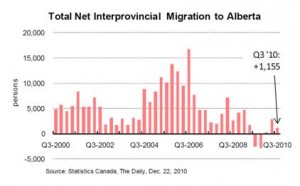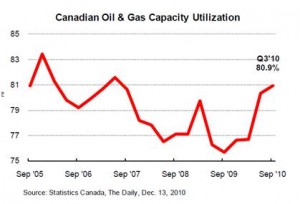Red Deer Market Update – Dec. 24/10
Wednesday, December 29th, 2010| Market Update to Dec. 23/10 Red Deer | ||||||
| Price Range | All
Active |
Pending | Active 1 Year Ago | Sold MTD
Dec. 16/10 |
Sold MTD
Dec. 23/10 |
Sold MTD
Dec. 23/09 |
| < 100 | 20 | 0 | 19 | 5 | 5 | 4 |
| 100 – 150 | 35 | 2 | 27 | 4 | 7 | 2 |
| 150 – 200 | 56 | 0 | 40 | 8 | 11 | 5 |
| 200 – 250 | 65 | 2 | 65 | 13 | 14 | 11 |
| 250 – 300 | 94 | 5 | 99 | 15 | 25 | 13 |
| 300 – 325 | 46 | 2 | 39 | 6 | 10 | 10 |
| 325 – 350 | 35 | 3 | 45 | 3 | 5 | 6 |
| 350 – 375 | 23 | 2 | 22 | 4 | 4 | 6 |
| 375 – 400 | 37 | 1 | 29 | 2 | 2 | 6 |
| 400 – 450 | 34 | 0 | 32 | 3 | 6 | 4 |
| 450 – 500 | 25 | 0 | 20 | 1 | 2 | 1 |
| 500+ | 48 | 1 | 47 | 1 | 1 | 3 |
| Total | 518 | 18 | 484 | 65 | 92 | 71 |
| Avg. Price | $320,919. | $324,524. | $268,276. | $270,130. | $294,389. | |
| Days On Market | 71 | 57 | 57 | 60 | 50 | |
Market Update – We’ve said many times it takes population growth to maintain a stable housing market. While we don’t have the old days back yet, we are moving in the right direction. We expect activity to increase relative to population growth in the new year. We don’t expect prices to escalate much without significant population growth.
Interprovincial Net Migration Slows – Todd Hirsch – Senior Economist, ATB Financial – December 22, 2010
A growing population is critical to the health of several economic sectors, including retail trade, housing markets, labour markets, and the tax base. Alberta’s population is still growing quite nicely, but the mix of factors contributing to the growth is shifting.
Alberta’s total population rose by 14,100 (+0.4%) to an estimated 3,735,100. That increase matched the national growth rate; BC had the fastest growing population (+0.5%). Canada’s total population is now 34,238,035.
During the third quarter of 2010, an estimated 21,702 people moved to Alberta from other provinces. At the same time, some 20,547 people from Alberta packed up and left for other provinces. On a net basis, Alberta’s interprovincial migration remained positive at 1,155 people—less than half the number in the second quarter. Interprovincial migration has returned to positive territory in 2010, but only barely. Stronger job markets in other provinces (notably Saskatchewan) have curtailed the inflow of job seekers.
While interprovincial migration has not been as significant a source of population growth as it had been, other factors have propelled Alberta’s population higher.
Natural population growth (i.e., births minus deaths) added 8,267 people. Alberta has the highest natural growth rate in the country, reflecting the high percentage of young families of child-rearing age. Net international migration also added 6,014 people.


